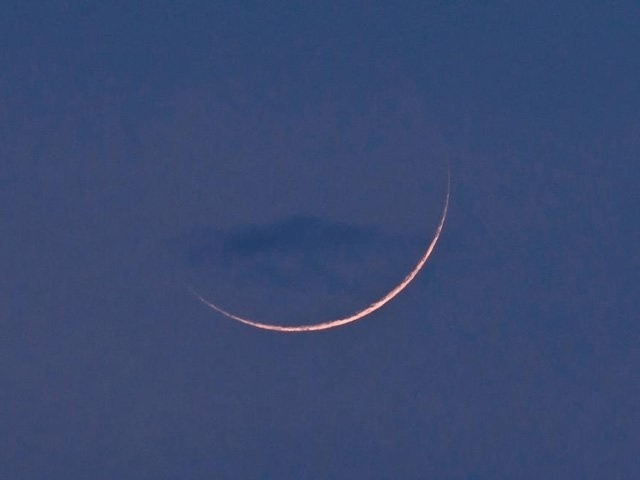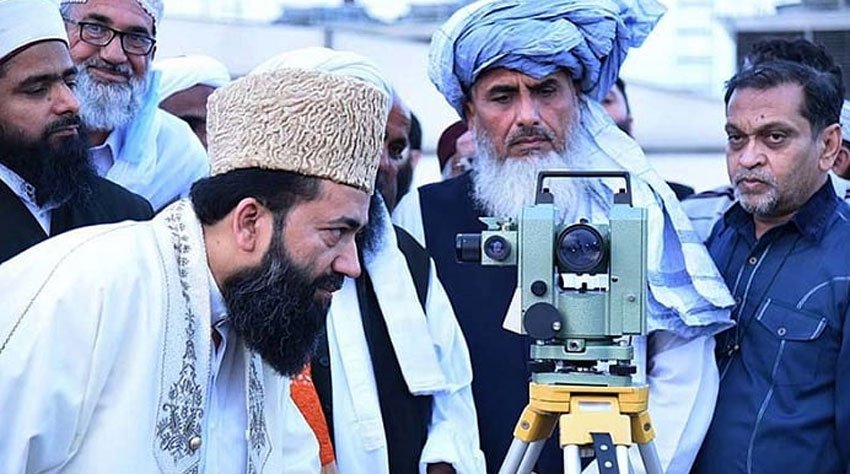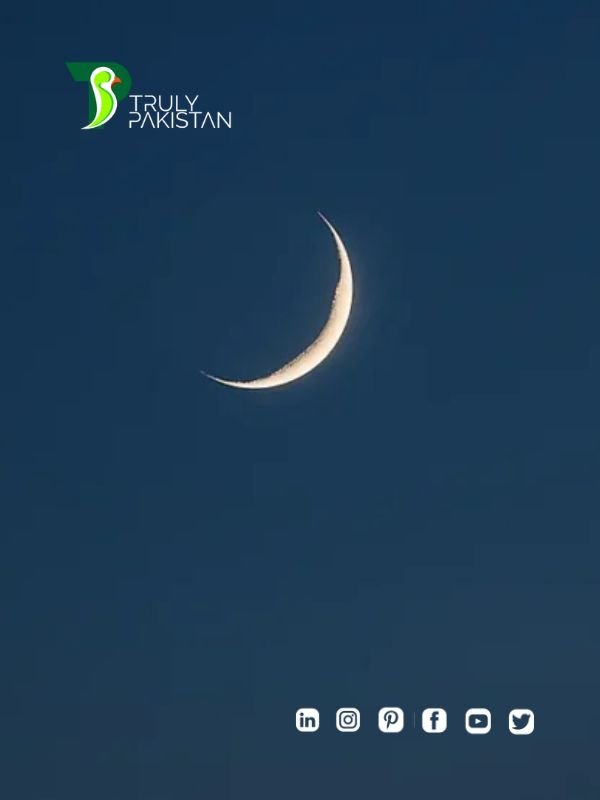Moon Sight Pakistan: The Complete Guide to Ruet-e-Hilal Decisions and Scientific Updates


In Pakistan, moon sighting determines when the Islamic months begin — shaping key religious observances like Ramadan, Eid ul-Fitr, and Eid ul-Adha. The process, managed by the Central Ruet-e-Hilal Committee, blends traditional eyewitness accounts with modern astronomical data to ensure national unity in religious dates.
Table of Contents
Understanding Moon Sight Pakistan and Its Religious Importance
What Moon Sight Pakistan Means for Islamic Calendar
The term Moon Sight Pakistan refers to the official confirmation of the crescent moon by the Ministry of Religious Affairs. Each sighting marks the start of a new lunar month in the Islamic calendar, which is based on the 29.5-day lunar cycle rather than the solar calendar used for civil purposes.
Why Crescent Visibility Matters in Pakistani Culture
Moon sighting has deep emotional and social value in Pakistan. Families and communities gather for announcements that mark the end of Ramadan fasting or the beginning of new months like Muharram. News channels, mosques, and social media all await the official word from the committee, making it a shared cultural experience that connects millions nationwide.
Religious Context: Shariah Basis for Moon Sighting
According to Islamic jurisprudence, the start of a month must be confirmed by actual crescent visibility or credible witness testimony. The Hadith of the Prophet Muhammad (PBUH) instructs Muslims to begin fasting upon seeing the new moon and to celebrate Eid when it reappears. This Shariah foundation is why Pakistan continues to prioritize visual confirmation alongside scientific prediction.
Central Ruet-e-Hilal Committee and Moon Sight Pakistan Process


Who Leads the Moon Sight Pakistan Committee
The Central Ruet-e-Hilal Committee is the official body responsible for moon sighting announcements in Pakistan. It is currently chaired by Maulana Abdul Khabir Azad and operates under the supervision of the Ministry of Religious Affairs and Interfaith Harmony. The committee consists of religious scholars, meteorologists, and representatives from SUPARCO and the Pakistan Meteorological Department (PMD).
How the 150 Observatories Network Works
To ensure nationwide accuracy, Pakistan maintains around 150 observatories across all provinces. Each local Ruet committee observes the sky on the 29th of the lunar month. Reports from these observatories are then sent to the central committee in Islamabad, where final verification and announcement are made based on both eyewitness testimony and scientific observation data.
Role of the Ministry of Religious Affairs and Meteorological Department
The Ministry of Religious Affairs (MoRA) facilitates committee meetings, public announcements, and coordination between federal and provincial teams. The Pakistan Meteorological Department provides visibility forecasts and technical data such as moon age, altitude, and elongation — factors that determine if the crescent can be seen with the naked eye or optical aid.
Scientific Methods Behind Moon Sight Pakistan Announcements
Use of Telescopes, Theodolites, and SUPARCO Data
Modern moon sighting in Pakistan is no longer purely visual. The committee uses telescopes, theodolites, and data from SUPARCO to track lunar position and visibility. SUPARCO’s lunar prediction program models moon rise and set times, while meteorologists assess atmospheric clarity for potential sightings.
Visibility Factors: Moon Age, Altitude, and Elongation
For the crescent to be visible, three main conditions must be met: Moon Age The moon must be at least 18–20 hours old after conjunction for visibility to be possible. Altitude The moon should be at least 5° above the horizon during sunset. Elongation The angular distance between the moon and the sun must exceed 10° for a clear view.
These parameters help determine whether the new moon can realistically be observed from Pakistan on a given evening.
Controversies Around Moon Sight Pakistan Decisions
Fawad Chaudhry and the Technology Debate
Pakistan’s moon sighting debate became a national talking point in 2019 when Federal Minister Fawad Chaudhry introduced a scientific calendar and a mobile app predicting lunar visibility. He argued that predictable astronomical data could end recurring disputes. Religious scholars, however, insisted that verified human sighting remains obligatory under Shariah. The clash revealed how science and faith can work together—but often collide—in shaping public religious practice.
Khyber Pakhtunkhwa’s Separate Moon Sighting Announcements
For decades, Khyber Pakhtunkhwa (KPK) has occasionally celebrated Eid a day earlier than the rest of Pakistan, based on independent announcements from the Qasim Ali Khan Mosque Committee in Peshawar. These differences stem from local testimonies and visibility variations due to geography. While the federal committee aims for national unity, regional autonomy and public trust continue to challenge uniform decisions.
Historical Disputes and Lessons Learned
From the early 1980s through 2020s, moon sighting controversies have repeated around Ramadan and Shawwal. Records show disagreements even after technological assistance became available. The consensus today: Pakistan’s approach should combine verified human observation, real-time weather data, and transparent public communication to reduce confusion.
How to Report Moon Sight Pakistan Observations
Official Contact Numbers and Verification Steps
Citizens who sight the crescent can report it directly to the Ministry of Religious Affairs or any regional Ruet-e-Hilal office. The committee verifies each report before making an announcement.
- Call the Central Ruet-e-Hilal Committee Control Room in Islamabad: 051-9208011 / 051-9208012
- Provide your full name, CNIC number, and city/district.
- Report the time and direction of sighting (e.g., west-southwest horizon after sunset).
- Mention whether the moon was seen with the naked eye or optical aid.
Only verified witnesses with consistent regional confirmation are included in the final decision.
Checklist: What Information a Witness Must Provide
- Exact date and local time of observation
- Location coordinates or nearest city
- Weather conditions (clear, partly cloudy, overcast)
- Instrument used (if any): telescope, binoculars, naked eye
- Duration of visibility and moon position in the sky
- Additional witness names and contact numbers
Providing detailed and accurate information strengthens the reliability of public reports and helps scientists match field observations with astronomical predictions.
How Reports Are Reviewed and Confirmed
After local committees gather all testimonies, data is shared with the central office in Islamabad. PMD experts cross-check reports against predicted coordinates and the moon’s age. Only when both religious scholars and scientific teams agree on credibility does the chairperson—currently Maulana Abdul Khabir Azad—announce the official result on national television. This process ensures that every sighting aligns with both faith and science.
FAQ: Common Questions About Moon Sight Pakistan
What is Ruet-e-Hilal Committee Pakistan?
It is the official government body responsible for confirming new-moon sightings and announcing the beginning of each Islamic month. Established in 1974, it operates under the Ministry of Religious Affairs.
Who is the current Moon Sight Pakistan chairman?
The committee is chaired by Maulana Abdul Khabir Azad, appointed in 2020 to lead nationwide coordination and unify provincial announcements.
How accurate are Moon Sight Pakistan predictions?
Combined data from SUPARCO and PMD achieve an estimated 80–90 percent alignment between predicted and actual visibility, though weather and atmospheric dust can still affect clarity.
Why does controversy arise every year in Pakistan?
Differences emerge when local committees claim sightings earlier than central verification. These variations usually stem from regional weather, human error, or differing interpretations of visibility requirements.
Can the public participate in Moon Sight Pakistan reporting?
Yes. Any citizen can report a verified sighting using official helplines or through local mosque committees. Reports are only accepted when confirmed by at least two credible witnesses and validated against meteorological data.
Conclusion: Why Verified Information Matters
Moon sighting in Pakistan is more than a matter of tradition — it’s about ensuring national unity through verified, evidence-based decisions. The Ruet-e-Hilal Committee plays a vital role in maintaining this balance between faith and science. With modern tools like PakMoonSighting.pk and data support from SUPARCO and the Pakistan Meteorological Department, Pakistan continues to evolve toward greater transparency and consistency in lunar observations.
For citizens, staying informed through official channels reduces confusion and promotes unity during significant religious events such as Ramadan and Eid. The next time you hear about a moon sighting, remember the effort, science, and coordination behind that one announcement.
Related Post: Conservation of Wildlife in Pakistan: Challenges & Success


Author: ZunNurain Khalid — Travel & Tourism Specialist, Founder of ExploreX Pvt. Ltd., and advocate for sustainable tourism in Pakistan. With over a decade of experience in digital marketing and destination branding, ZunNurain has worked extensively on promoting Pakistan’s natural and cultural heritage.
References
- Ministry of Religious Affairs and Interfaith Harmony – Official Announcements
- Pakistan Meteorological Department – Moon Visibility Reports
- SUPARCO – Space & Upper Atmosphere Research Commission
- PakMoonSighting.pk – Government Moon Sighting Portal
- Moonsighting.com – Global Lunar Visibility Database
- Dawn News – Committee Announcements and Updates
- Express Tribune – National Moon Sighting Coverage
- TimeandDate.com – Moon Phases and Rise/Set Timings
- Wikipedia – Ruet-e-Hilal Committee Overview

